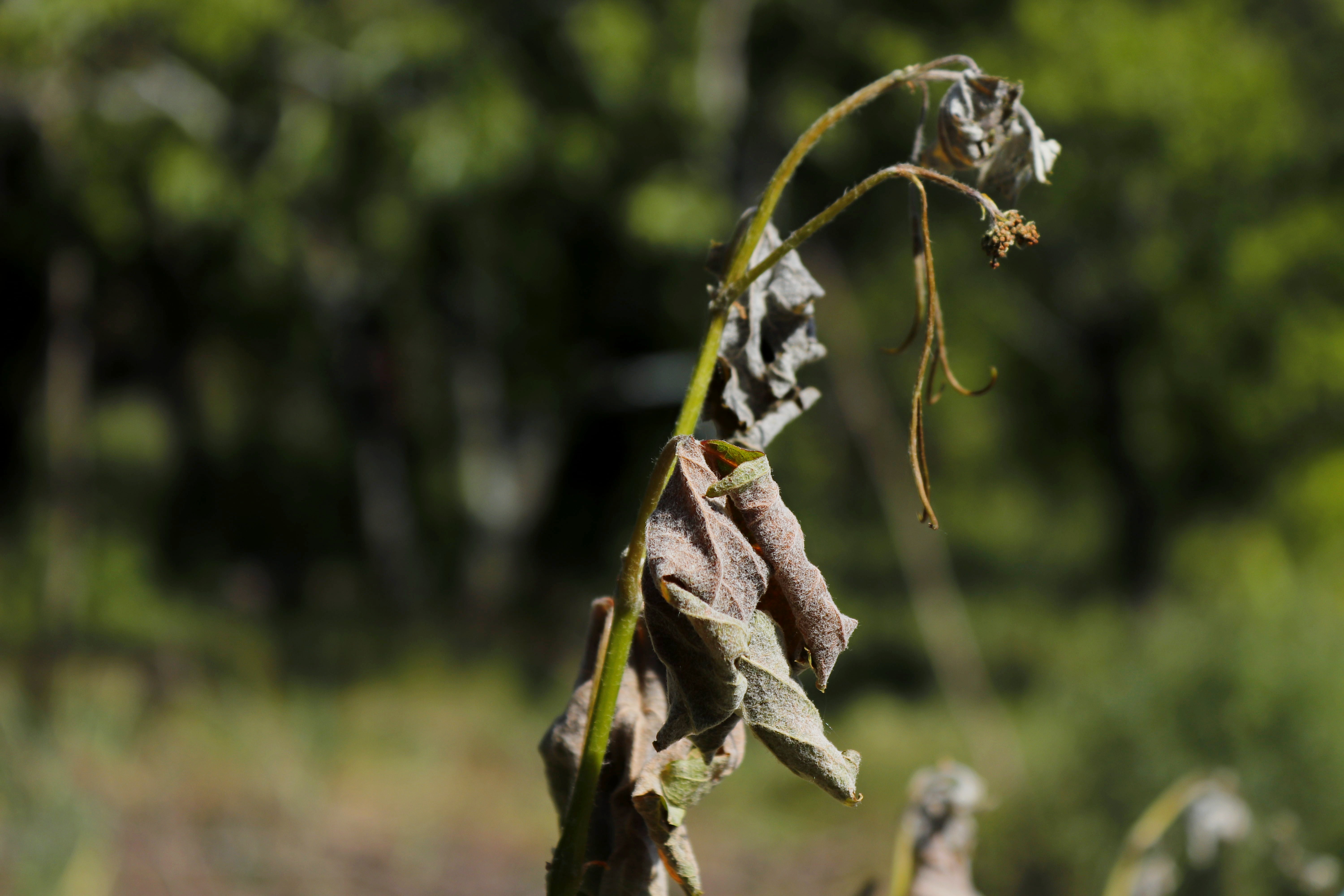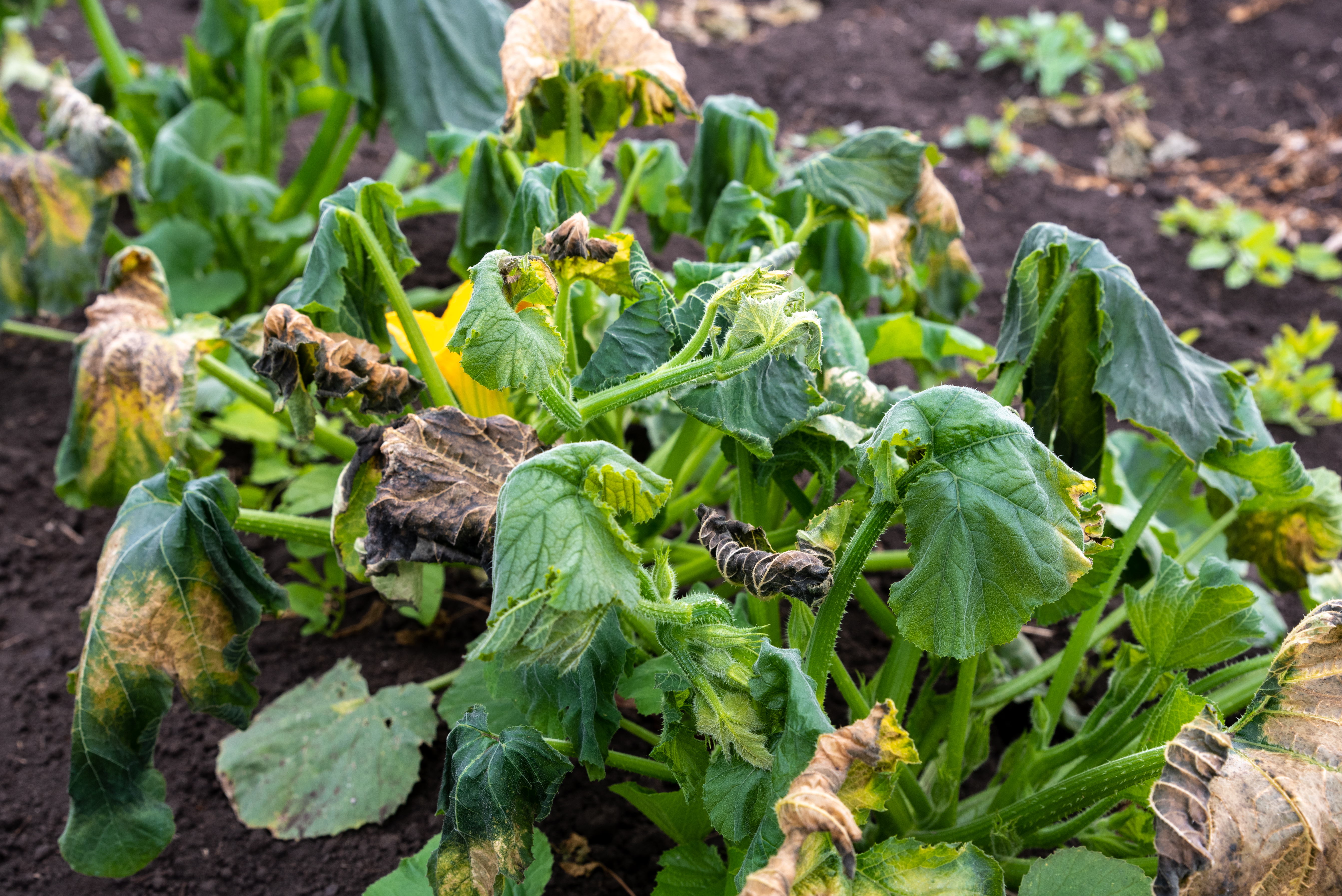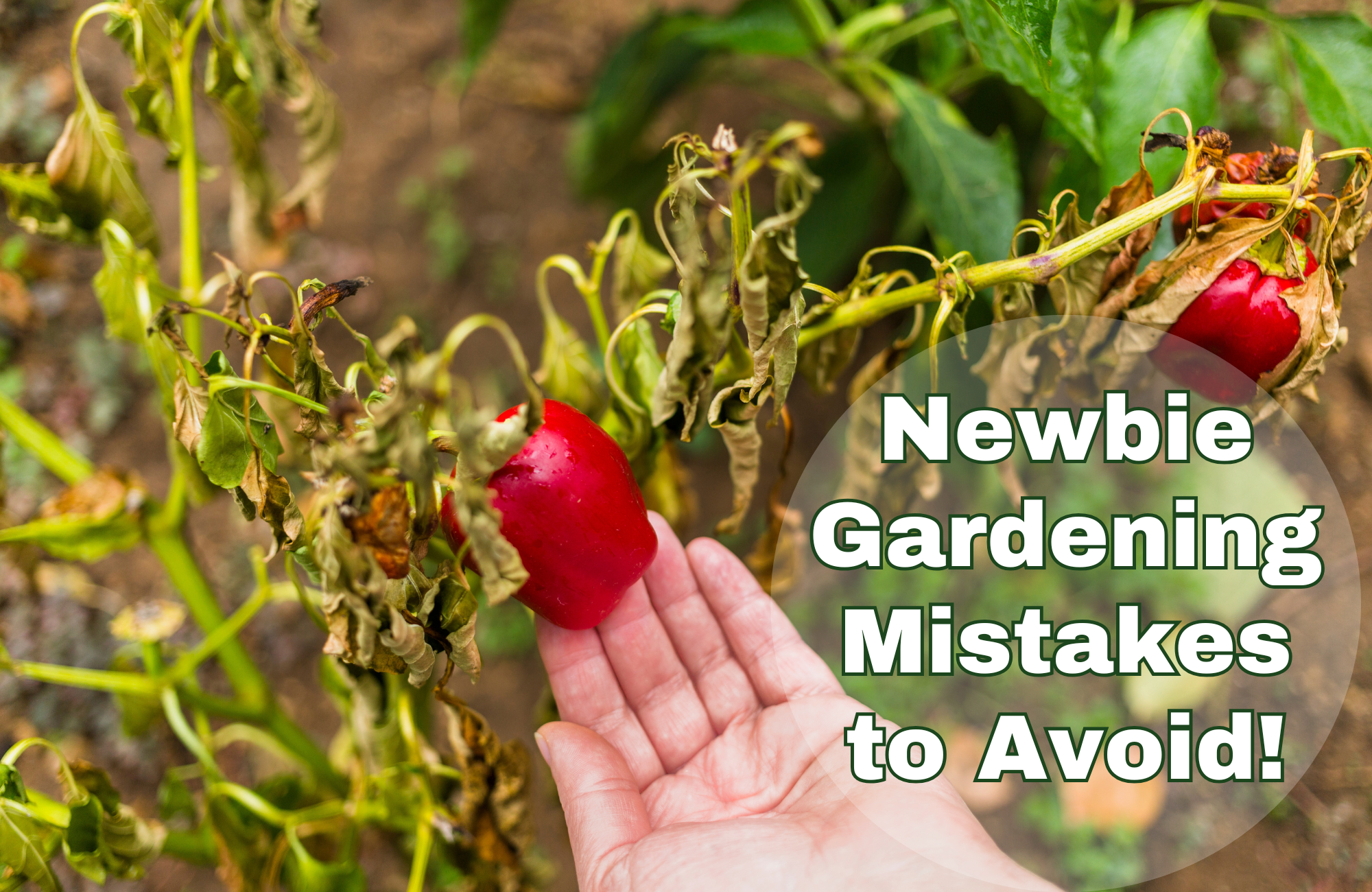Gardening is a journey. It takes years to build up enough knowledge and experience to get consistently good harvests. In the beginning of the journey, you don’t know what you don’t know and you might make mistakes with your garden and not even realize it. Even with some gardening experience under our belts, it’s easy to still make ’newbie’ mistakes when we forget (or ignore) gardening fundamentals.
So what are some common gardening pitfalls, and how can we avoid them?
Not planning your garden
Not planning your garden is a very common mistake for new gardeners. It’s easy to assume that gardening season starts with a fun trip to the garden center to load up on plants and seeds, then coming home and trying to figure out where to squeeze them in and how to grow them. While this laid-back approach can work, it can also cause almost all the other mistakes in this article- like starting plants too early or too late, or not having the right plants in the right areas of your garden (just to name a couple!)
Many gardeners enjoy the process of garden planning, but it does take some time to think through everything in detail. That’s why the Planter app is such a game-changer- you can easily plan your garden from virtually anywhere. Whether you’re on a bus, on a comfy couch, or even out in your garden! Planter also makes it easy to make changes to your garden plans and visualize your garden. With a solid plan your garden will be set up for a successful growing season!

Selecting plants and varieties that don’t suit your climate
There’s a lot to learn when it comes to selecting plants and varieties that are well-adapted for your climate.
As a starting point, before buying annual plants you’ll want to know your frost dates (if applicable) and the number of days in your growing season. Luckily Planter makes this easy- you can enter your location to get your frost dates and the number of days in your growing season will display automatically! Many annual plants need to be started indoors so they have enough time to grow and reach maturity well before your first frost. If you live in a region with a short growing season, you may want to seek out short-season varieties that mature more quickly so you can get the maximum harvest possible in the time you have. You should also check the variety description for information about whether a variety performs best in hotter areas or in areas with more moderate temperatures.
For perennials it’s important to know your hardiness zone to be able to determine whether a plant will survive winters in your area. To be on the safe side you might want to choose plants that are rated a zone or two hardier than your zone, in case of a freak cold snap that could kill them off. If you want to grow perennials that are not hardy in your zone you’ll need to take extra steps- or even overwinter them indoors- to help them survive.
On top considering the length of your growing season and the average temperatures, you might also want to look for varieties that are resistant to the pests and diseases that are most common in your area.
While you’re gaining experience with different varieties in your own garden, talk with other local gardeners to get an idea of which plants and varieties perform best for them.
Starting plants too early or too late
Timing is key when it comes to gardening, but it can be tricky to figure out when is the best time to start seeds indoors and when to plant outdoors. There’s no black-and-white formula for when to start planting- it depends on where you are, what you’re growing, and other factors.
New gardeners often don’t realize how critical it is to get the timing right in the garden, especially in a short growing season. It’s easy to assume that anything available for sale at the garden center still has time to grow. You might pick up a packet of seeds mid-season not realizing they needed to be started weeks or even months ago. Gardeners with some experience know that many plants need to be started indoors (or purchased as transplants and planted early enough in the season), but with that knowledge it’s tempting to start too early. Starting seeds indoors too early can lead to overgrown plants that are difficult to keep healthy until they can be safely planted outside. And almost every gardener is guilty at some point of planting too early outdoors only to have their seeds rot or to have a late frost kill off their plants!

To hone in on the right time to start plants, check out the Growing Calendar in Planter for guidelines on when to start plants in your area, then refer to the seed packets or plant tags for the specific varieties you are growing to get a more exact idea of when they should be planted.
Not matching plant needs with the growing area
Some plants prefer full sun, while others do better in part shade. Some plants need fertile soil while others fare better in poorer soil. Some plants need consistent soil moisture while others prefer drier conditions. And some plants prefer slightly alkaline soil while others prefer more acidic soil. If you don’t select or create a location in your garden that meets each plants’ needs, they are bound to struggle.
You can find all of this important plant care information in Planter, and you can filter plants by their needs so you can plan your garden with each plant’s requirements in mind.
Improperly spacing plants
New gardeners will often ‘wing it’ when planting out their garden, not realizing how important it is to give each plant it’s proper space. Spacing plants too closely can cause water and nutrient deficiencies and can lead to issues with disease and pests. Spacing plants too far apart means that precious garden space is wasted and maintenance and harvesting is less efficient. Having wide open spaces between plants also invites weeds to grow.

Different plants have different spacing requirements, depending on how big they get and their water and nutrient needs. There are several different plant spacing methods that gardeners use, and with experience you can hone in on the spacing that works best for your garden. Plant spacing noted on seed packets is usually row spacing, a traditional plant spacing method. Another popular spacing method is Square Foot Gardening which aims to maximize the number of plants per square foot of garden space by building healthy soil. The plant spacings in Planter follow the Square Foot Gardening method.
Not observing your plants regularly
Growing a garden isn’t just about planting, fertilizing, watering, and waiting for a harvest. One of the most important steps to having a successful garden is to regularly observe each of your plants to make sure they’re staying healthy. Many gardening problems can be corrected if they’re caught early enough, but if you don’t take time to observe your plants regularly issues like lack of water, lack of fertility, or pests and diseases can go unnoticed for so long that they’re beyond fixing. With tender seedlings, young plants, and container plants sometimes even a few hours without water or with too much sun can be life-or-death.
Observing plants regularly is much easier said than done with our busy daily lives. Sometimes having tools like irrigation systems on timers can help, but automation isn’t a full replacement for a gardener’s presence. The best thing to do is to figure out a gardening routine that works with your schedule, and don’t take unnecessary risks with sensitive plants if you might not have time to check on them.
Stressing too much about garden fails
While this is a list of gardening mistakes to avoid, keep in mind that making mistakes is a big part of gardening. Good gardeners learn from their mistakes and improve, and instead of dwelling on them they look for possible solutions. If some of your seedlings died, maybe there’s still an opportunity to buy some transplants. If pests wiped out some of your crops, maybe there’s still time to swap in a different crop. Even if you can’t recover from a mistake in the same season, next season is always a blank slate to build on what you learned.
We all try to avoid mistakes in the garden as much as possible, but more important than avoiding mistakes is persevering when mistakes do happen!
